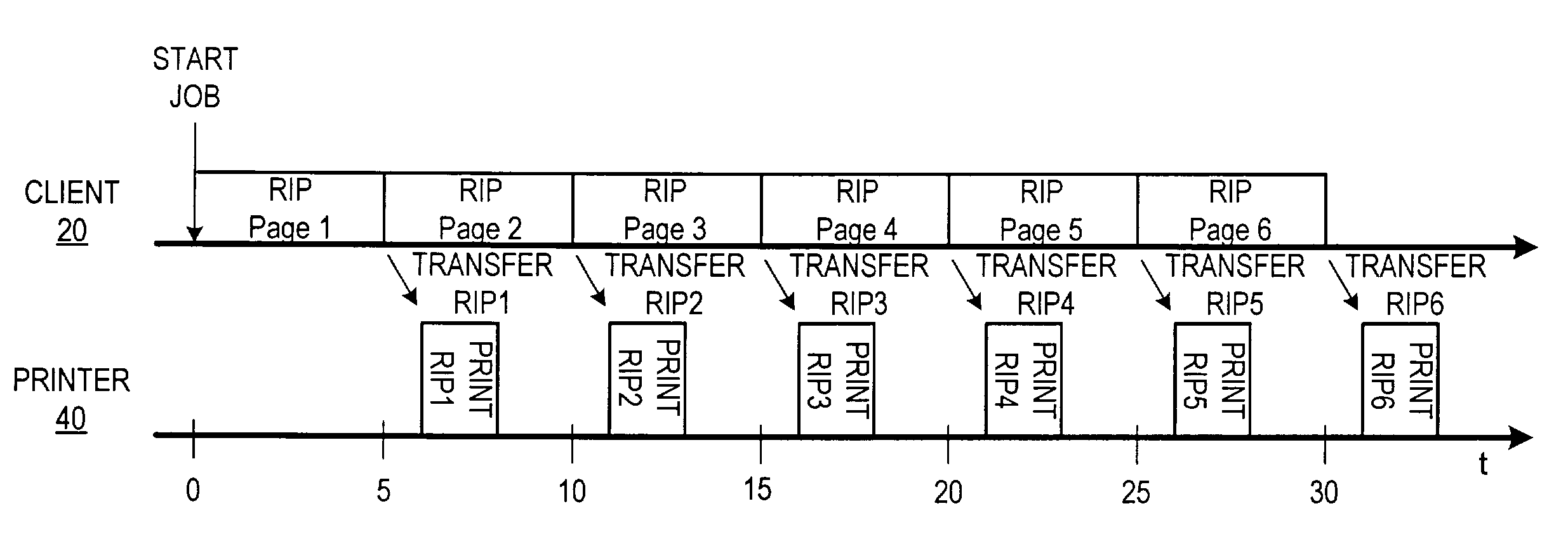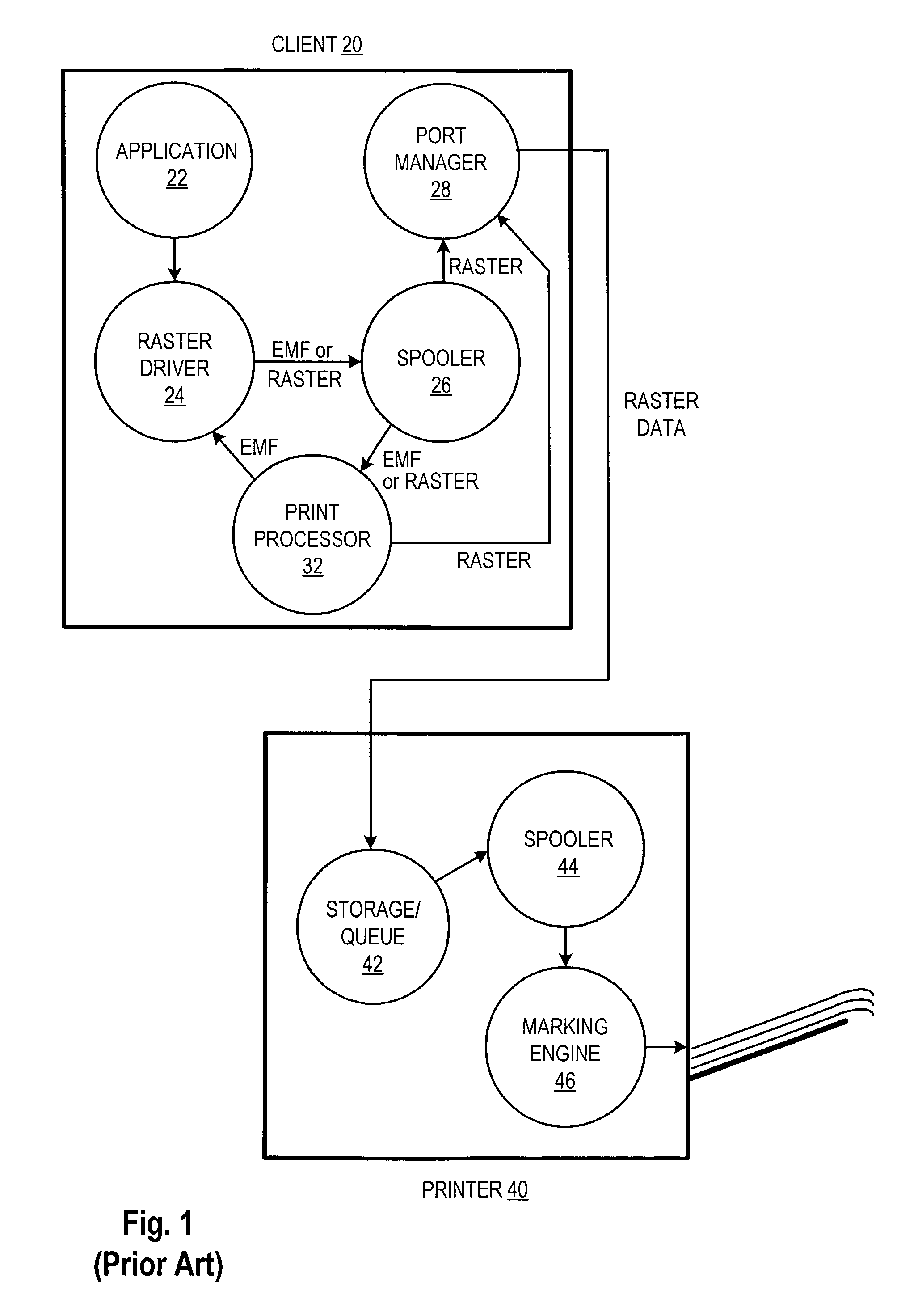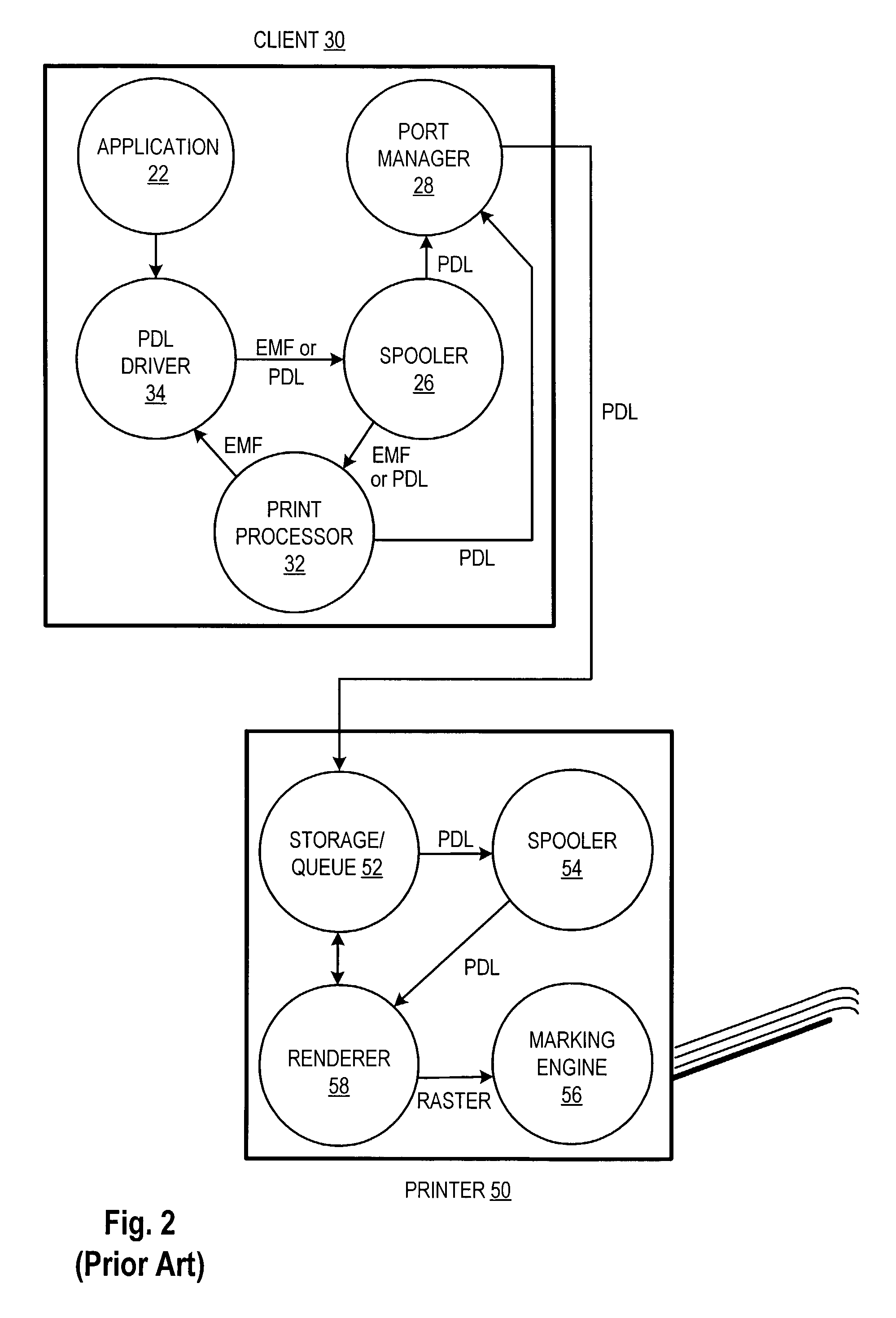Load-balancing distributed raster image processing
- Summary
- Abstract
- Description
- Claims
- Application Information
AI Technical Summary
Benefits of technology
Problems solved by technology
Method used
Image
Examples
Embodiment Construction
[0019]The advantages and operational differences of the embodiments are perhaps best understood by comparison to traditional print processing configurations. Accordingly, this description begins with a description of typical client, RIP server, and printer operation in a Microsoft Windows-type environment.
[0020]FIG. 1 shows a client 20 and a basic printer 40. Client 20 runs applications, such as application 22, that generate graphical output as a set of instructions to a generic Windows-compatible display device.
[0021]When, e.g., a user or scheduled task prompts application 22 to print a document, application 22 passes the graphical instructions for printing the document to raster driver 24. Raster driver 24 is typically supplied by the manufacturer of printer 40, and is adapted to translate Windows-format graphical instructions to a printer-specific format. Driver 24 can either journal or render the instructions at this point to create a print job. When the data is rendered, driver...
PUM
 Login to View More
Login to View More Abstract
Description
Claims
Application Information
 Login to View More
Login to View More - R&D
- Intellectual Property
- Life Sciences
- Materials
- Tech Scout
- Unparalleled Data Quality
- Higher Quality Content
- 60% Fewer Hallucinations
Browse by: Latest US Patents, China's latest patents, Technical Efficacy Thesaurus, Application Domain, Technology Topic, Popular Technical Reports.
© 2025 PatSnap. All rights reserved.Legal|Privacy policy|Modern Slavery Act Transparency Statement|Sitemap|About US| Contact US: help@patsnap.com



